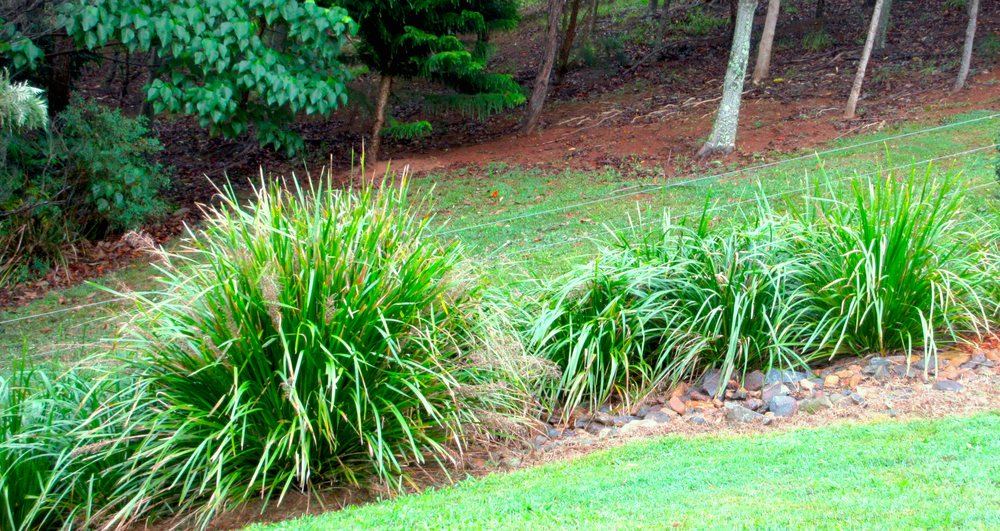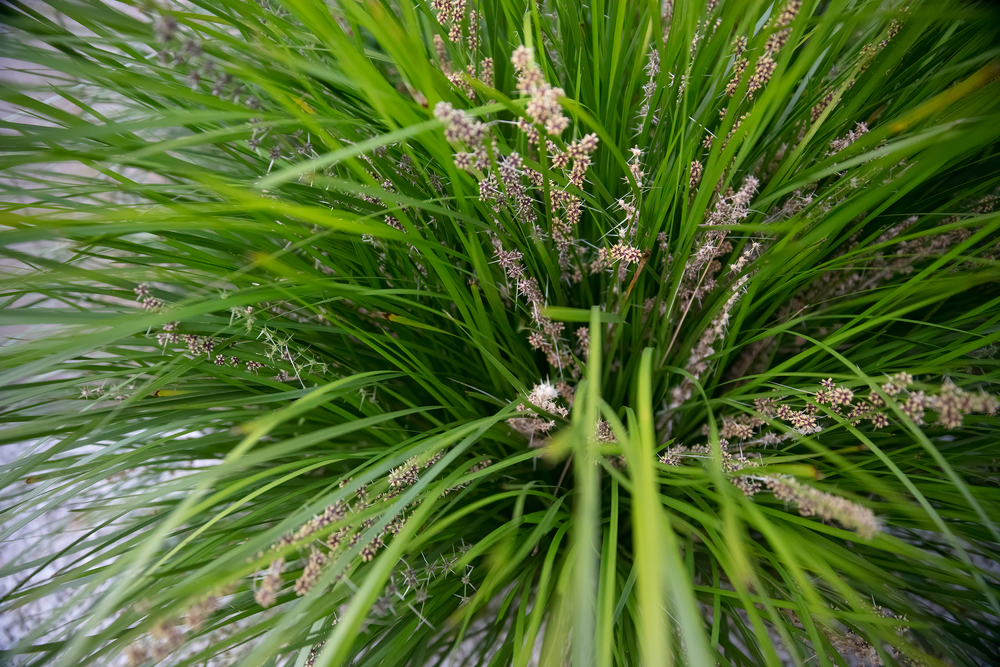When adding texture and interest to your garden, few plants can match Lomandra Breeze, also known as Dwarf Mat Rush. This hardy perennial is native to Australia, where it grows in various habitats, from woodlands to wetlands.
It’s an evergreen that forms a low, dense tuft of fine-textured, arching leaves. This tough little plant is perfect for planting in those difficult-to-reach places, like slopes and rocky outcrops. It’s also happy in pots.

| Botanical Name | Lomandra Longifolia’ Breeze’ |
| Common Name | Dwarf Mat Rush, Lomandra Breeze |
| Plant Type | Perennial |
| Flower Color | Yellow |
| Size When Mature | 36 Inches |
| Bloom Time | Summer |
| Sun Requirements | Full to Partial Sun |
| USDA Hardiness Zones | 9-11 |
| Soil PH Range | 4.5-9.0 |
| Soil Type | Acidic, Neutral, Alkaline, Well-Draining |
| Water Needs | Low |
| Native Area | Australia |
What You Need to Know About Dwarf Mat Rush
Also known as Lomandra breeze, this is a tufted evergreen perennial native to Australia.
The plant can reach a height of up to 36 inches, having long, narrow, sword-like leaves arranged in whorls around the stem. Glossy green leaves are produced by this plant where the edges of the leaves are serrated, and the tips are pointed. The leaves also grow in a spiral arrangement and are arranged in whorls of 3-6.
The plant’s flowers are small and delicate, with a yellow color that almost seems to glow. They bloom during summer and grow in clusters; each flower has six petals arranged in a star-like shape. A sweet fragrance reminiscent of honey originates from the plant’s flowers.
This plant is deer resistant and can grow in a wide range of soils, as long as it is well-draining. It’s also tolerant of drought and salt spray. Because it’s salt tolerant, this plant is an ideal choice for seaside gardens.
The Breeze Dwarf Mat Rush is an excellent choice for gardeners looking for a plant that is low maintenance and easy to care for. It’s also a great choice for those who want to add texture and interest to their garden. If you’re looking for a plant that will thrive in just about any situation, the Breeze Dwarf Mat Rush is the one for you!
How to Care for Dwarf Mat Rush
Here’s everything you need to know about growing and caring for a thriving Dwarf Mat Rush:
Light
Just like all plants, Dwarf Mat Rush needs the right amount of light to grow and stay healthy. They thrive in full sunlight but can also tolerate some shade. If your plant is getting too much sun, you’ll notice the leaves turning yellow. Too little sun will cause the plant to become leggy and produce fewer leaves.
The best location for your Dwarf Mat Rush is one that gets at least six hours of direct sunlight per day. If you can’t provide that much sunlight, try placing the plant in a south-facing window.
Water and Soil Needs
Dwarf Mat Rush is a drought-tolerant plant, so you don’t need to water it very often. In fact, too much water can be detrimental to the plant. Once established, it will only need to be watered every few weeks during prolonged dry periods. When you do water the plant, be sure to give it a good soaking so that the water reaches the roots.
It will grow in most types of soil as long as it is well-drained. You may want to mix in some sand or organic matter to improve drainage if you have heavy clay soil. For the plant to thrive, put the plant in soil with a pH range of 4.5-9.
Dwarf mat rush can be planted in pots or containers as long as they have drainage holes. Be sure to use a potting mix designed for container plants.
Temperature Requirements
Dwarf mat rush is hardy in USDA zones 9-11 and grows best with temperatures between 20 and 40 degrees Fahrenheit. However, it can also tolerate cooler temperatures as long as it receives enough sunlight. If the temperature drops below 20 degrees Fahrenheit, the leaves may start to turn brown and die back.
Fertilizer
As any gardener knows, using the right fertilizer is essential for growing healthy plants. Different plants have different fertilizer needs, so it’s important to choose a fertilizer that is specifically designed for the type of plant you are growing.
For example, the best fertilizer to use on a Dwarf Mat Rush is a balanced fertilizer like 10-10-10. This type of fertilizer provides a good blend of nutrients that will help the plant to thrive.
To keep your plant looking its best, fertilize it regularly. A good rule of thumb is to apply fertilizer twice a year – once in the spring and once in the fall.
Common Diseases
Thankfully, this plant is relatively resistant to both pests and diseases. However, it can sometimes be affected by Scale insects or Mealybugs. These insects feed on the plant’s sap, causing the leaves to turn yellow and eventually die. If you notice pests on your plant, you can remove them by hand or treat the plant with an insecticide.
As for diseases, the most common one to affect Dwarf Mat Rush is rust. Rust appears as orange or brown spots on the leaves and can cause the leaves to deform and fall off. Remove any affected leaves and dispose of them to prevent rust from spreading. You can also treat the plant with a fungicide.
Lomandra Breeze Propagation
Dwarf Mat Rush grass is easy to propagate from seed, and you can divide it.
To propagate from seed, first, fill a pot with seed-starting mix. Sow the seeds on the surface of the mixture and then lightly cover them with more mix. Water the pot well and place it in a warm, sunny spot.
Keep the mix moist but not wet, and you should see new seedlings emerging within a few weeks. Once they have two or three sets of true leaves, you can transplant them into individual pots or the garden.
Dividing is an alternative method of propagation that can be done every few years to keep your plant healthy. To divide, simply dig up the plant and carefully pull it apart into smaller sections. Each section should have its own roots. Replant the sections in individual pots or the garden, and water them well.

